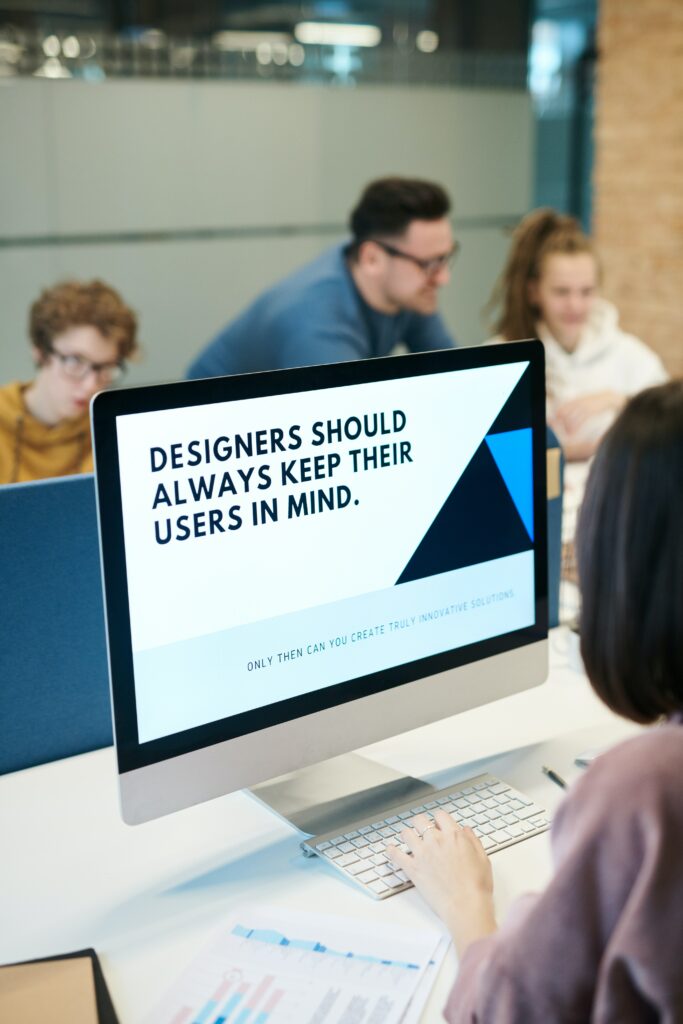Motivation
When you look at the products we encounter in our everyday lives, you always think how fascinating it is that people can create such products. I immediately asked myself how large companies conduct such projects and what methods they use. In the example of IBM, one always comes across the design thinking approach. This was introduced after feedback from employees, 71% of whom said that current obligations limit the ability to develop new ideas.
To change the way IBM solves problems an innovation team, which overall consists of 750 designers and caused costs of $100 million, was formed. This team worked on creating a bootcamp which was launched in 2013 and was designed for the employees to participate in. It should entice them to think out of the box and, above all, satisfy the user’s wishes.
I also participated in this Enterprise Design Thinking course and would like to share my experiences and gained knowledge in this blog.

Enterprise Design Thinking
The Enterprise Design Thinking approach consists of three factors. The Principles, Loop and Keys.
The first principle is to focus on the user outcomes which means that the project team should always analyze what features are most important to the users and then focus on these aspects. During this process, the employees should never be afraid to ask “why”. Therefore, IBM uses a five-times-why iteration to always get closer to the root cause of the problem. As an example, you can see a three-time iteration on the right side.
| „The last best experience that anyone has anywhere, becomes the minimum expectation for the experience they want everywhere “ |
The second principle is called “restless invention” which means that every product should be seen as a prototype. For example, if humans accepted that horse carriages are the perfect solution for traveling, we would still use them. However, you can see a horse carriage as the prototype for cars and cars are just the prototype for the next innovation. It is also a reminder for the fact that the expectations of humans rise over time as Bridget van Kralingen said.
| 3 W’s Who is the user? What can the users do what they could not do before? Wow: What differentiates us from the competition? |
The last principle states that one should work in diverse empowered teams to access a variety of opinions and skills. This should then lead to brilliant innovations through a combination of ideas over time.
To plan a project successfully, IBM has come up with “keys”. The most important key is called “Hills”. These are equivalent to milestones that should help achieve the goal. The 3 W’s, which you can see on the right side, are the basis for setting these milestones.
Another important key ist the “playback”. The teams should constantly exchange information with each other and synchronize their movements. In order to understand the user perfectly, IBM has created a “Sponsor User” program that represents the third key. Selected people are invited to work with the project team to understand and satisfy real world needs.
All of these actions regarding the keys and the principles are repeated in a loop. The Loop of IBM consists of 3 phases: Observe, Reflect, Make.
In the “observe” phase, users are interviewed or observed at work to understand their needs. Then, in the “reflect” phase, the observations are shared with the team, for example to combine ideas. Finally, it comes to the “make” phase. In this phase, you try to implement projects quickly and simply, because “the faster you make, the faster you learn”. Mistakes and Failure are seen as an opportunity.
Achievements
What I always wondered during the participation in the course was whether this method achieves any success at all for the company. After researching, I quickly realized that the Design Thinking method should not be underestimated.
IBM was able to reduce its costs through the acceleration of projects by $20.6 million and furthermore by reducing risk and increasing portfolio profitability they saved another $18.6 million. The Return-on-Investment has increased by 301%. Furthermore, IBM was able to reduce its development time by 33% and its design time by 75%. This enabled the company to bring products to market 2 times faster.
Lessons learned
After completing the course and gaining the knowledge described above, I realized that Design Thinking is not just a way of thinking about projects in a company. It is a way of thinking from which you can gain a great advantage if you integrate it into your everyday life.
The approach conveys positives such as that mistakes should not be seen as a problem but as an advantage. Moreover, one should always ask “why”, in order to properly understand the problem and that you should not be ashamed of absurd ideas, because exactly these ideas make the world a better place.
Even if it sounds strange for some to adopt a mindset that requires you to make mistakes or express ideas that sound unrealistic, IBM’s achievements show that this approach can be successful.
In my opinion, it is very worthwhile to take the IBM course because it is currently free of charge and provides a mindset that offers added value in everyday life through the numerous interactive tasks.



